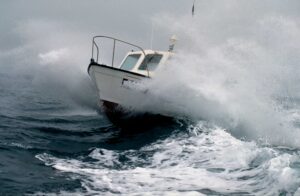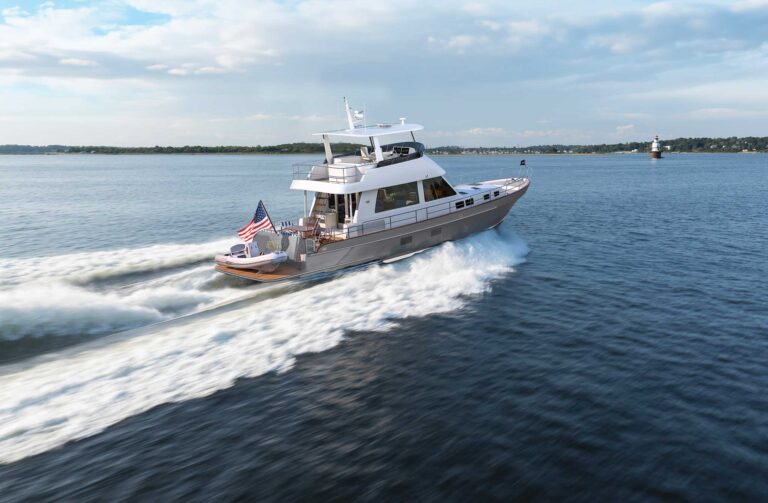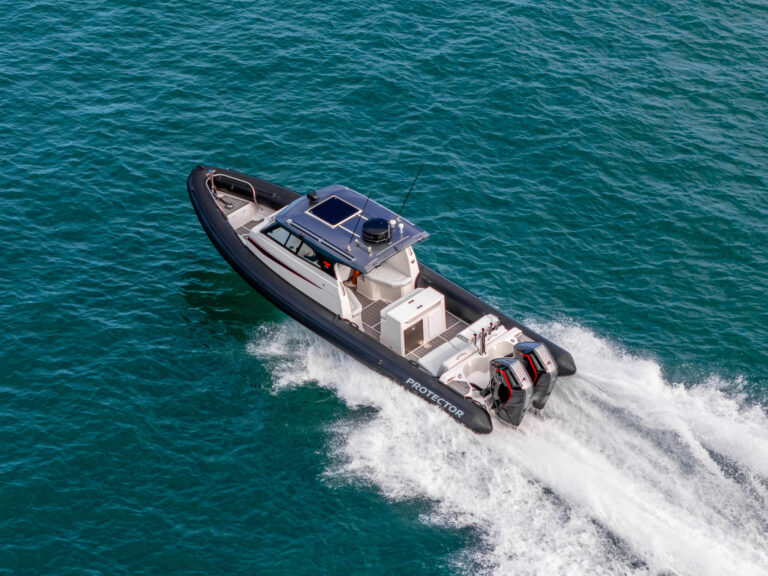
I was meeting with 40 professional
mariners to discuss their man-overboard procedures. Because they operated where the water is cold (less than 60 degrees most of the year), I asked them my favorite question: “If you go overboard in January wearing street clothes when the water is just above 33 degrees Fahrenheit, how long until you become hypothermic?”
After hearing the most common answer—five minutes—from these on-the-water pros, I told them the truth. Most of what they know about hypothermia is wrong.
You can’t get hypothermic in less than 10 minutes. The average adult can survive in cold water for more than an hour. To understand the dangers of cold water, you have to stop focusing on hypothermia. Cold water kills, but hypothermia is just one cause of fatalities.

Four things happen to the body when it’s immersed in cold water. The first phase is the cold shock response. It is a stage of increased heart rate and blood pressure, uncontrolled gasping and, sometimes, uncontrolled movement. Lasting anywhere from 30 seconds to a few minutes, the cold shock response can be deadly on its own. In fact, of all the people who die in cold water, it is estimated that 20 percent die in the first two minutes. Some people panic or swallow water in that first uncontrolled gasp. If they have heart problems, the cold shock may trigger a heart attack. Surviving this stage is about getting your breathing under control and staying calm; you have to realize that the feeling will pass.
The second stage of cold water immersion is called cold incapacitation. Lacking adequate insulation, your body will make its own. Long before your core temperature drops a degree, the veins in your extremities (those things you swim with) will constrict. As a result, you’ll lose the ability to control your hands, and the muscles in your arms and legs will just flat-out quit working well enough to keep you above water. If you’re not wearing a life jacket, you’re in trouble. Without some form of flotation, even the best swimmer will drown in cold water, and in less than 30 minutes. There’s no way around it. More than 50 percent of the people who die in cold water drown following cold incapacitation, often without ever experiencing a drop in core temperature.
As for hypothermia, which is the third phase of cold water immersion, it can kill. But that only happens in about 15 percent of cold water deaths. You have to have some form of flotation to get hypothermia, and it takes much longer than you think. I once spent an hour in 44-degree water wearing street clothes, and my core temperature dropped by less than 2 degrees. I was not clinically hypothermic. It was uncomfortable, to be sure, and I wouldn’t recommend finding your limit, but it probably would have taken another hour for me to lose consciousness, and an hour after that to cool my core to the point of no return. The body’s efforts to keep the core warm— vasoconstriction and shivering—are surprisingly effective. Shivering and blood shunting to the core were so productive for me that 20 minutes after jumping in, I had a fever of 100.2 degrees. Keep in mind, though, that water temperature and body fat percentage are important factors that determine a person’s risk for hypothermia.
Over the years, I’ve rescued a number of people from cold water. Once they’re settled in the helicopter, I enforce a rule: They must lie down and stay down until a doctor says they can stand. I’ve lost count of the number of survivors I have annoyed because I wouldn’t let them move. I don’t care how good or warm a person feels. The final phase of cold water immersion is circum-rescue collapse. Shortly before, during or after rescue—sometimes hours after—victims of cold water immersion may pass out, experience ventricular fibrillation or go into full cardiac arrest.
Why does that happen? One of the things that hypothermia affects is heart-rate variability. That is the heart’s ability to speed up and slow down. Getting up and moving around requires your heart to pump more blood; even sitting upright can be taxing on the heart. If the heart starts to flutter instead of pump, down you go. Victims of immersion hypothermia are lucky to be alive, but they are also fragile.
TIPS
When working on deck in cold-water environments (water less than 60 degrees), always wear a flotation device.
- If you witness a man overboard situation, quickly get a life ring to the person in the water. That’s step one. Must do it.
- Make certain that your life ring is not just on your vessel, but also is readily available and not tied to the cradle.
- When working on deck in cold-water environments, always wear a flotation device. Did I say that already? Well, when I quit reading search reports that end with “experienced” mariners dying because they thought they understood cold water, I’ll come up with better advice.
This article originally appeared in the December 2018 issue.











